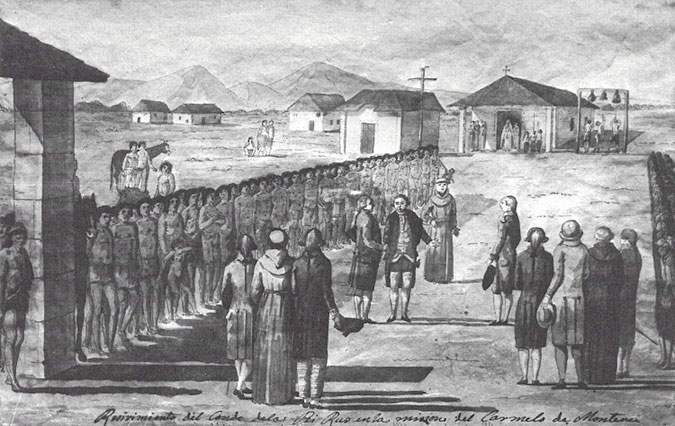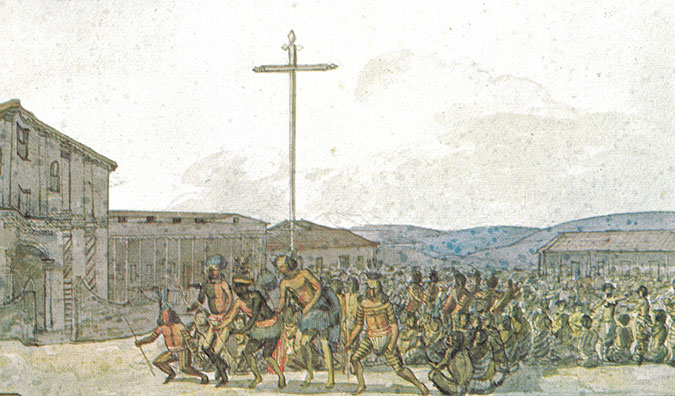Tripping Through Time Story:
Disrupting the ancestral way of life of the Indigenous Peoples

Indigenous People, Lived as Skilled Hunter-Gatherers
The Indigenous people of the Bay Area (Muwekma Ohlone, in our case) were very skilled hunters and fishermen with the ability to fashion hunting tools and seaworthy canoes from the reeds native to local marshes. They fished with spears of their own design and hunted land animals with weapons that includedbows and arrows. It is thought that they had lived for as long as ten thousand years as hunter-gatherers before the arrival of Spanish colonists. The Ohlone were known to leave the calmer waters of San Francisco Bay and venture into open ocean, but apparently they had not built sailing boats suitable for longer ocean voyages. The first appearance of Spanish men-of-war must have seemed literally like the out-of-this-world inventions that they were.

Arrival of Colonists from Mexico
With the arrival of colonists from New Spain (Mexico today) beginning with the Portolá expedition of 1769 and Juan Bautista de Anza’s expedition of 1775-1776, whose goals were to permanently settle Alta California and thereby exclude other nations from it (notably the English, the Russians and the Americans), Franciscan priests established Catholic Missions for those colonists and convert the Indigenous people, who culturally were thought to be pagan savages. Embedded in this policy was a less altruistic cultural goal: to create a substantial labor force to support the tiny contingent of about 240 colonists in their effort to build a new way of life.

Native Peoples Were Critical to Survival of Colonists
The Indigenous peoples, in addition to religious indoctrination, were taught many of the work skills needed for the Missions to function. That included learning to make adobe bricks and to assemble them into building walls, to ride horses in order to manage expanding herds of cattle, and to plant and nurture crops needed to feed priests, the expanding civilian population in communities like Pueblo de San José and San Francisco, and of course to feed their own families living beside the Missions. Thus the native peoples were the builders, the vaqueros, as well as the farmers who were critical to the very survival of the Missions and the Spanish colonists.

Survival and Rebellion Leading to Reconstitution and Reculturation
Treatment of the Indigenous people varied considerably, in part depending on the specific priests who acted presumably as their altruistic benefactors. Some of the priests were cruel, as in one notable instance at Mission San José where the natives openly complained of cruel treatment from one priest in particular. As might be expected in an unequal relationship of that time between master and “pagan” natives, their appeals for justice were summarily rebuffed. Not surprisingly, whenever such abuses occurred, the aggrieved natives would run away from that Mission. The ecclesiastical response was that the Army was ordered to track them down and forceably return them to their Mission for even more abusive treatment. Like the African slaves of the American South some decades later, insubordination was not ignored, creating a progression from survival to rebellion that for the most part ended in reconstitution and reculturation. With the end of Mexican rule, many of the Indigenous people disbanded from the Missions to resume, for a time, their former lives in their ancestral lands.